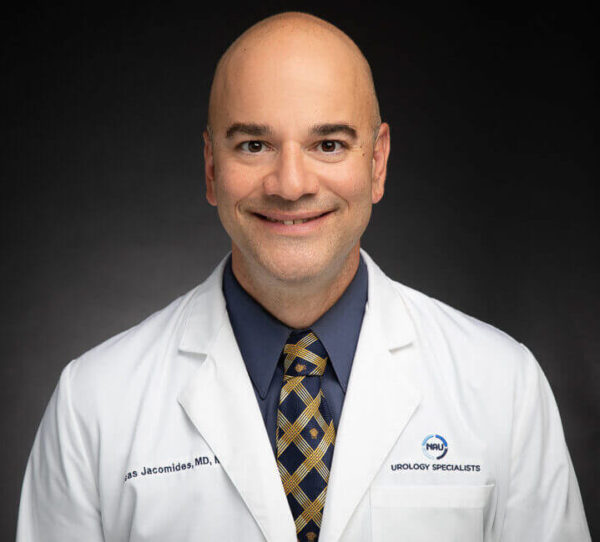
Millions of men have had life-saving surgery to remove prostate cancer.
An unfortunate complication that can sometimes occur is urinary incontinence. This type of incontinence, called post-prostatectomy incontinence (PPI), can occur from 5-12% of patients and can range from mild to severe lack of urinary control. Leakage can occur with coughing or sneezing or with heavy lifting. Some men also note increased leakage with changing positions, such as from squatting to standing.
Lack of urinary control can be very troublesome to men. We see men stop doing the physical activities they enjoy as a result of urinary leakage and are constantly reminded of their surgery for prostate cancer. Many patients do not tell their Urologist about their leakage even when asked. It is easy to imagine men that don’t want to ‘bother’ their surgeon who may have saved their life.
Treatment for post-prostatectomy incontinence begins with a thorough evaluation of the problem. It can be easy to confuse the symptoms with another condition that can occur after prostate surgery called ‘over-active bladder.’ Over-active bladder leads to an uncontrolled urge to urinate and leakage. This type of incontinence is NOT treated with surgery but rather with medication, dietary changes and nerve therapy.
Understanding the extent of the leakage is important in deciding the optimal surgical management. Men themselves are not good judges of how much urine they leak. We ask all potential surgical patients to undergo a ‘pad weight test’ where their urinary protective pads are weighed to determine the volume of urine leakage that happens daily.
The reason that post-prostatectomy incontinence occurs has to do with the importance of the prostate in helping to keep continent and the proximity of the prostate to the muscular sphincter that allows men to keep urinary control. Removal of the prostate can either damage this sphincter or uncover preexisting damage. This problem can occur regardless of the type of surgery or the experience of the surgeon.
Physical Therapy
Our practice believes strongly in the early and aggressive use of pelvic physical therapy and biofeedback therapy to ‘teach’ your body how to regain continence after surgery. We have seen success even in patients with leakage problems several years after their original surgery. Pelvic Floor Physical Therapy involves more than simple ‘Kegel exercises.’ Improving scar tissue, and strengthening hip and core muscles can significantly increase continence to a point that avoids surgery in many cases.
Injection of Bulking Agents
Historically, Urologists have injected collagen or similar bulking agents into the urethra, near the muscular urinary sphincter, in men with mild post-prostatectomy incontinence. These agents are quick to inject and have few long-term complications. However, such treatment does not work well for larger degrees of leakage and the results do not last, requiring repeat injections in many cases. For mild cases of leakage in men who may not be suitable for more invasive surgery may benefit greatly from this approach (http://www.ncbi.nlm.nih.gov/pubmed/9679878).
Link to video of collagen injection
Urethral Slings
Recent advances in understanding the reasons for post-prostatectomy incontinence have allowed for the development of ‘slings’ that can effectively reduce the amount of leakage even in men with a large amount of leakage. The Virtue male sling by Coloplast is one of the latest and most advanced of such sling systems. The procedure can be done as an outpatient and will result in continence almost immediately. Infection concerns are reduced significantly compared to other treatment options and patient satisfaction is very high.
Artificial Urinary Sphincter
The Artificial Urinary Sphincter has been a treatment for post-prostatectomy incontinence for decades and is the treatment of choice for patients with the most severe incontinence and those that have failed other treatments. The AMS 800 is a surgically implanted 3-piece system that allows patients to inflate and deflate a special ‘cuff’ around the urethra to achieve continence. The surgery can be performed as an outpatient and results in very high rates of patient satisfaction.















